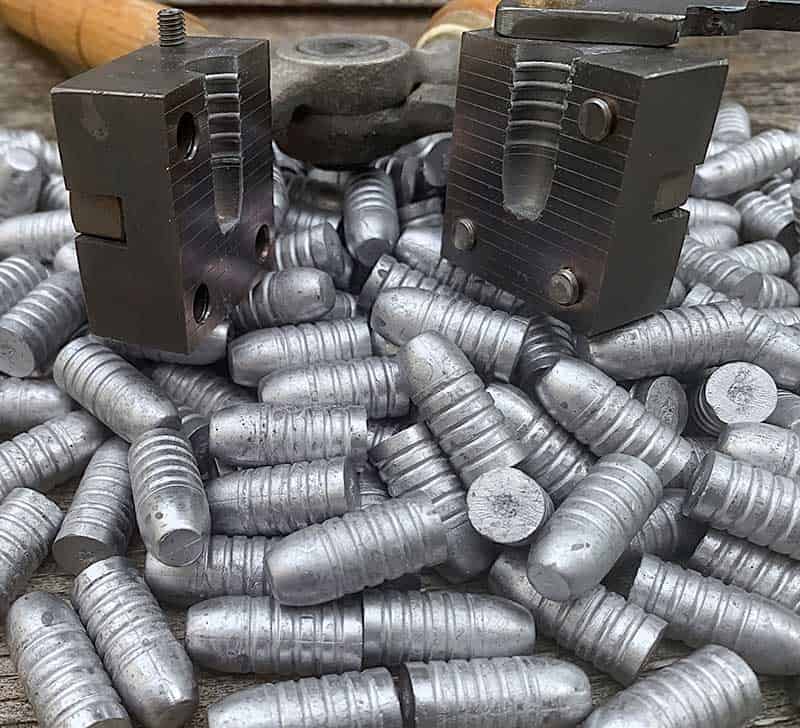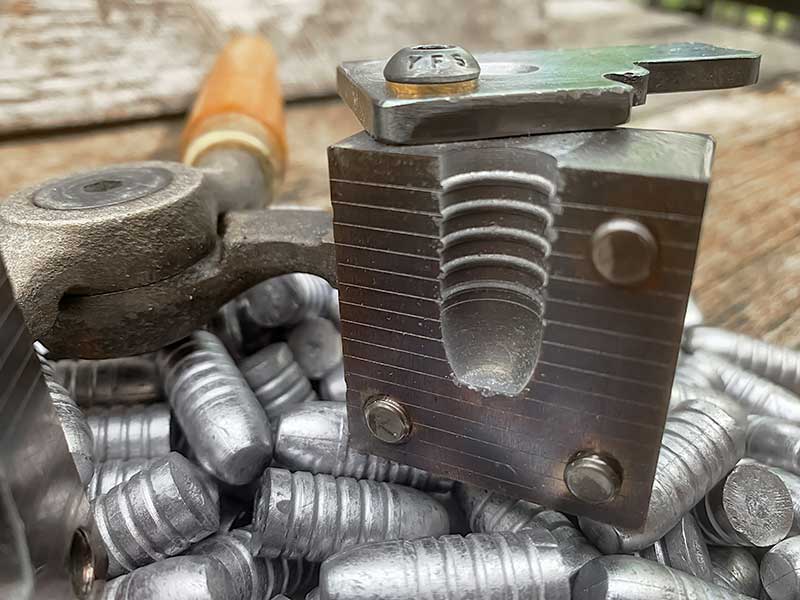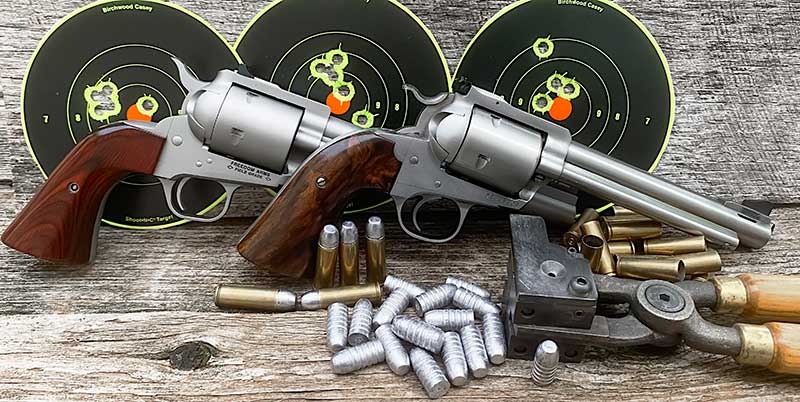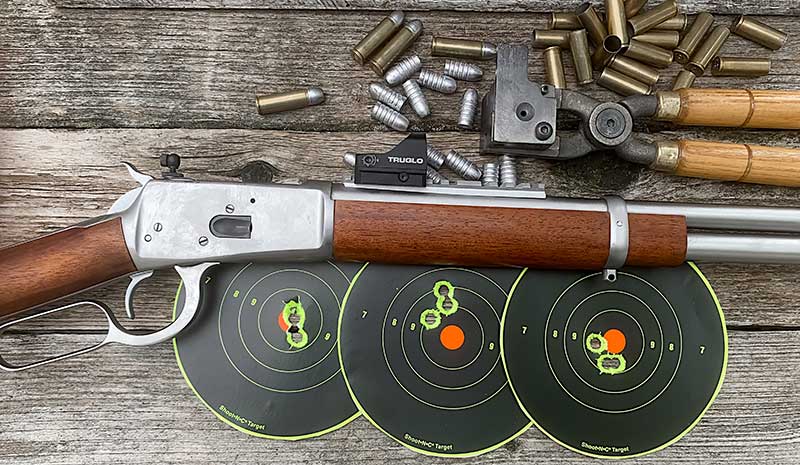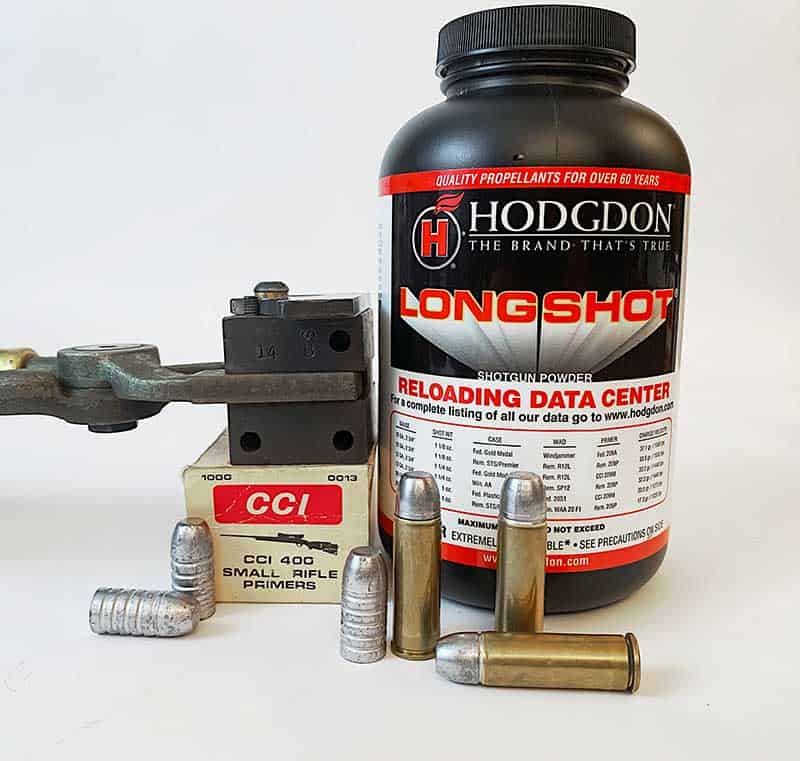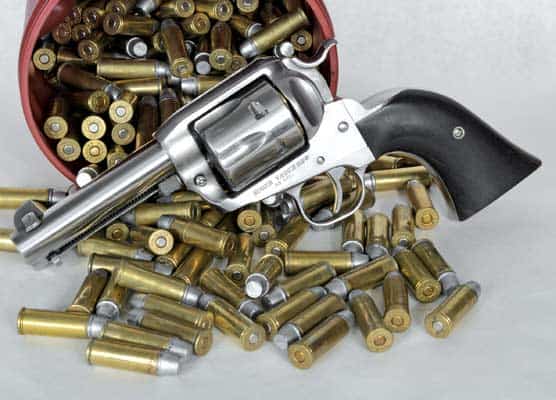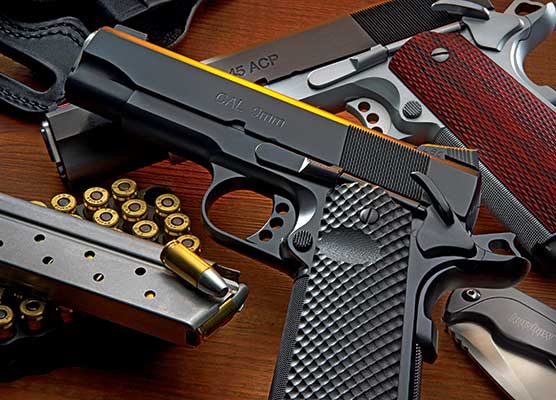Cast Bullet Buddies
Every handloader knows the brass case is the most expensive component of the cartridge. It’s why we scrounge, protect and cherish it. Thankfully, brass can be loaded over and over, depending on how “hot” you reload them. Therefore, savvy handloaders mostly load light, to moderate handloads, for economy’s sake.
The bullet is the next cost worthy part of the cartridge. Casting your own bullets, especially with scrounged lead, keeps cost to a minimum. It’s for this reason, as well as the independence casting your own slugs provides, I started casting in the first place.
Powder Coating (PC)
I learned about PC from friend Dick Thompson seven or eight years ago. He heard about it while vacationing in Arizona from a group of shooters down there. These shooters discovered it from some mates in Australia. No one quite knows who came up with the idea, but I’m sure glad they did.
PC allows for faster/easier processing of cast bullets, with many benefits. These include use of softer alloys, cleaner loading, more economical, color-coding loads, and no leading of barrels. We can always learn new tricks from our buddies.
Air Mail
Answering my phone one night, I hear, “Hey Tank, I saw your article on the Rossi R92 .454 Casull and got to thinking …” It was friend and fellow lead-head Jim Williamson. You remember Jim. He owns the cool Mauser 71/84 I wrote about in GUNS Magazine last year. Jim unselfishly lets everyone shoot his gun/ammo at banana rock, some 600 yards away at the Whittington Center.
Jim goes on to explain Mic McPherson designed a heavy 0.452″ radiused flat-nosed bullet weighing around 420 grains, designed especially for Freedom Arms Model 83s, chambered in .454 Casull.
“I figured you may enjoy playing with some in your Rossi,” Jim went on to explain. I liked the idea. I liked it a lot. “I’ll send a few your way to play with.” A few days later, I receive a heavy box and over 200 of the brightest and shiniest bullets you ever saw. Jim even shared the load data they came up with. What a great guy!
Seems 11 grains of Hodgdon Longshot propels this slug 1,000 FPS from FA guns. With my 20″ barreled Rossi, this increases to over 1,300 fps, which incidentally approximates black powder loaded .45-70 loads the buffalo hunters used over 100+ years ago. I load up a hundred or so bullets on my Dillon 550C press and start shooting. It’s no surprise the bullets and load shoot as accurate as any load I’ve ever tried. This comes from the experience and knowledge of Mic McPherson.
Rendezvous of Sorts
A few months later, I meet up with Jim at the Whittington Center and he’s brought his custom Steve Brooks mold with him. Rather than sending me more bullets, he simply lends me the mold so I can cast more slugs and ship the mold back to him. Isn’t that cool? Saves on shipping, Jim’s alloy stockpile, and everyone’s happy! I told you bullet buddies are best!
The Slug
This heavy for diameter slug has all the traits for a long-range shooter. Its length provides excellent sectional density and bearing surface for an accurate, flat shooting slug. Momentum is calculated by multiplying velocity times mass and this bullet is oozing with it. Once a heavy bullet gets started, it takes longer to slow down. It’s the reason Extreme Long-Range Shooters use heavy for caliber bullets during competition.
Shootin’
Shooting my handloads with the recommended 11 grains of Longshot, sparked by a CCI 400 small rifle primer, I have three guns to test the bullet/load with. The aforementioned Rossie R92, a Freedom Arms model 83 and a Ruger Bisley, which Ken Kelly Mag-na-ported for me.
For the Rossi, shooting was done at 50 yards with a TruGlo red dot sight. Accuracy was easily under 1″, with cloverleaf groups a common occurrence. The revolvers were shot at 25 yards, with arms resting on sandbags. The Freedom Arms basically chewed a single hole in the target, while the Ruger clustered 3–4 shots tightly, with one or two shots out of the group. Overall, accuracy was excellent with all three guns.
Jim went on to tell me Mic and a mutual buddy, Randy, have experienced excellent accuracy out to 600 yards, and more. I have no doubts, as I’ve seen Mic shoot several times at that distance.
Random Gun Thoughts
Don’t ever think you know it all when it comes to guns. Be open minded and willing to try out new things. It keeps things fresh, and you just might learn something new while having fun to boot. Share your knowledge to spread and promote our sport and lifestyle. The more you and your friends know, the better it is for all of us in the long run.
I can’t wait until my next visit to the Whittington Center. I have several large bean cans full of bullets from Jim’s mold and I’ll be launching them from my Rossi, Ruger and Freedom Arms, busting big rocks into smaller rocks, one shot at a time.
Ain’t life grand? It is when you have plenty of bullet buddies!

